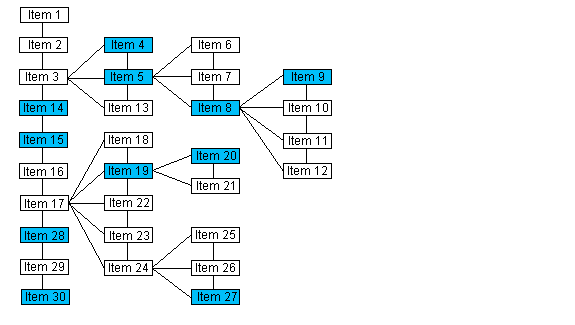
|
Products | Support | Email a link to this topic. | Send comments on this topic. | Back to Introduction - All Topics | Help Version 19.0.3.25
|
LEADTOOLS Medical (Leadtools.Dicom assembly)

|
Products | Support | Email a link to this topic. | Send comments on this topic. | Back to Introduction - All Topics | Help Version 19.0.3.25
|
| Leadtools.Dicom Namespace > DicomDataSet Class : GetNextKey Method |

| If the passed object points to: | The method returns an object pointing to: |
|---|---|
| Item 1 | Item 2 |
| Item 3 | Item 4 |
| Item 5 | null |
| Item 6 | Item 7 |
If the Data Set is evaluated as a list, the next item in the list is returned. Please note that the numbering of the items in the following illustration does indicate the order of the items when the Data Set is evaluated as a list.

| If the passed object points to: | The method returns an object pointing to: |
|---|---|
| Item 14 | Item 15 |
| Item 4 | Item 5 |
| Item 8 | Item 9 |
| Item 19 | Item 20 |
| Item 27 | Item 28 |
| Item 30 | null |
The following methods will also help you navigate the Data Set as either a tree or a list:
If you evaluate the Data Set as a tree, you can also use the following methods to navigate the tree: